The best things to do in Recife, Brazil: a local’s guide
I know I’m biased, since I was born and raised in Recife and love my hometown. But I truly believe that the capital of Pernambuco, in the Northeast of Brazil, is one of the most culturally interesting Brazilian capitals. Unfortunately, most tourists miss out on some of its best spots. In this article, I’ll share my favorite things to do in Recife, from popular tourist attractions to off-the-beaten-path recommendations.
I’ll also answer common questions for anyone planning a trip to Recife: when to visit, how long to stay, how to get around, and where to stay.
If you still have questions after reading, feel free to ask in the comments! And if you’d like personalized help planning your trip to Brazil or Portuguese lessons to help you get around, email me at [email protected].
You might also like to read:
- Where to stay in Recife and Olinda, Brazil
- Best things to do in Porto de Galinhas, Brazil
- Where to stay in Rio de Janeiro: accommodation tips
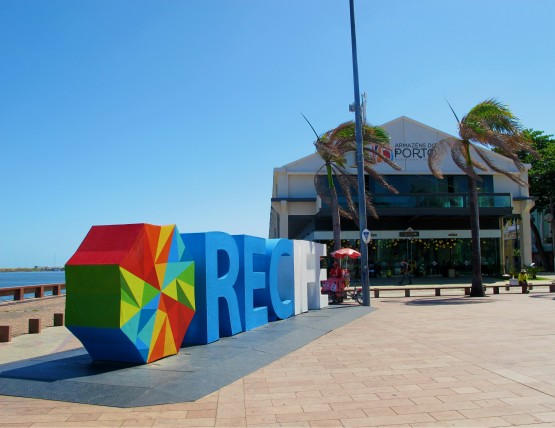
When is the best time to go to Recife?
The best time to visit Recife is during the summer, which in the Southern Hemisphere goes from December to March. During that period, there is usually little rain, beautiful sunny days, and many pre-Carnival and Carnival parties and rehearsals in Recife and neighboring Olinda.
However, springtime is also a great option, especially if you plan on visiting some of the beautiful beaches in Pernambuco or its neighboring states and would like to avoid the crowds. From September to November, it’s still considered low season, but the weather is usually quite good.
From April to August, though, you should be prepared for a lot of rainy days. If going to the beach is a priority for you, this isn’t the best time. On the upside, we celebrate a very traditional party called São João in late June, which is a lot of fun. If you’re planning on visiting Pernambuco’s countryside (especially the region called Sertão, our ‘backlands’), winter is ideal because this area gets extremely hot during the summer.
Thinking of spending Carnival in Recife or Olinda? Check out the carnival survival guide I wrote!
How long should you stay in Recife?
For most destinations, my answer to questions like “How long should I stay there?” is basically, “It depends.” After all, any place offers more than just a checklist of tourist attractions.
If you just want to see Recife’s main attractions briefly, 2 days are enough. But if you want a more immersive experience, taking your time at each place I recommend here and exploring nearby destinations, it’s worth staying longer. At the end of this article, I’ve included a suggested itinerary for 3 to 5 days.

How to get around Recife
There is a subway system in Recife, but it’s not very useful for most tourists, as it covers only a limited part of the city. If you plan to use public transport, buses are a better option. However, be aware that most bus stops around the city don’t indicate which buses stop there. I recommend checking routes on apps like Moovit.
As of June 2024, the fare for the most common buses is R$4.10, but there are some labeled as “Opcional,” which cost either R$5.15 or R$7.10. Buses to Porto de Galinhas currently cost R$13.70 (without AC) or R$20.05 (with AC). The subway ticket currently costs R$4.25.
Unfortunately, traffic in Recife is among the worst in Brazil, so be prepared for traffic jams during rush hours.
If you want more comfort, consider using taxis, Uber, or another ride-share app called 99. I don’t think it’s worth renting a car unless you’re planning a short stay in the city with a side trip to a nearby beach.
Where to stay in Recife
Although Recife has much more to offer than just Boa Viagem Beach, most of the city’s hotels and B&Bs are located there. For sightseeing and a beach vibe, I recommend looking for a hotel in this area, closer to Praia do Pina, which is the beach nearest to the city center.
If you’re interested in seasonal rentals, such as Airbnb options, I suggest pleasant residential neighborhoods like Espinheiro and Graças, which are safe, centrally located, and have many good bars and restaurants.
For a more laid-back or bohemian experience, consider staying in Olinda, right next to Recife, in the neighborhood known as Cidade Alta or Sítio Histórico. This is the historic part of the city, offering a charming, small-town feel and is ideal if you’re coming for Carnival.
For more information, check out the full article I wrote about where to stay in Recife and Olinda. You can also click here to explore all the options for hotels, hostels, inns, and apartments in Recife for your trip dates.
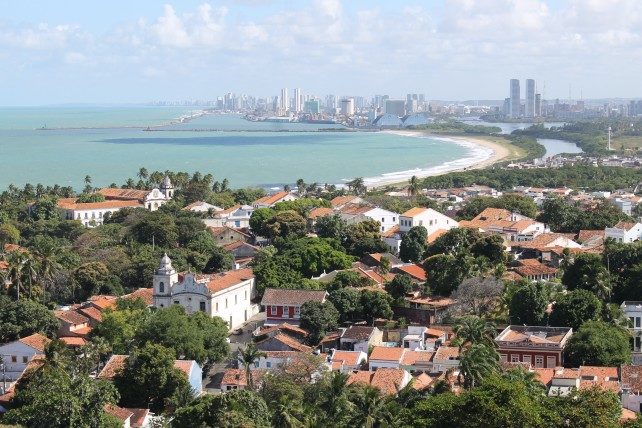
The best things to do in Recife
Now, let’s get to the main theme of this article: what are the best things to do in Recife? I’ll separate recommendations by region so you can see which places interest you most and mark them on Google Maps to organize your itinerary, or scroll to the end of this article to check out my suggested itinerary.
Things to do in Recife Antigo
If you’re wondering what to do in Recife in just one day, don’t hesitate: head to Recife Antigo, the city’s “Old Town.”
The most tourist-friendly neighborhood in Recife, officially called Bairro do Recife, is located in the city’s central region and is truly charming. Simply strolling through its cobblestone streets is worth the visit, but Recife Antigo also has several must-see attractions, as well as great bars and restaurants.
Plus, it’s not just for tourists: it houses the largest technology hub in Brazil’s North-Northeast region and is a major leisure and cultural center for locals. I used to work here and often visited with friends and family.
Marco Zero and Parque das Esculturas
Start your tour at Praça Barão do Rio Branco, better known as Marco Zero (Ground Zero). Besides marking the local road distances, this square hosts cultural events such as Recife’s Carnival parties.
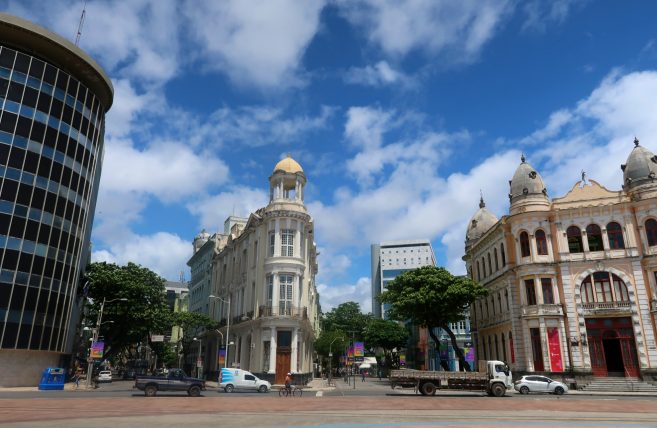
From the square, across the Capibaribe River estuary, you’ll see Francisco Brennand’s Sculpture Park (Parque das Esculturas), featuring ceramic works you can view up close after a 5-minute boat ride. There are usually boatmen at Marco Zero offering rides (they charge around R$10 for a round trip). I love seeing Recife Antigo from that angle.
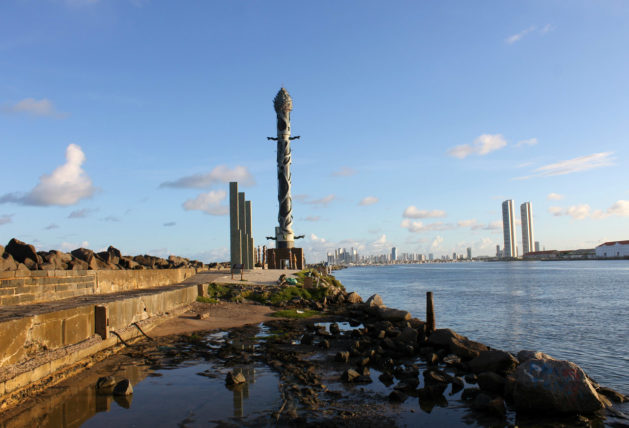
Around Marco Zero, you’ll find a complex of restaurants and bars, the Centro de Artesanato de Pernambuco (Pernambuco Crafts Center, a great spot for souvenirs), and beautiful buildings such as Caixa Cultural, a cultural center hosting interesting exhibitions.
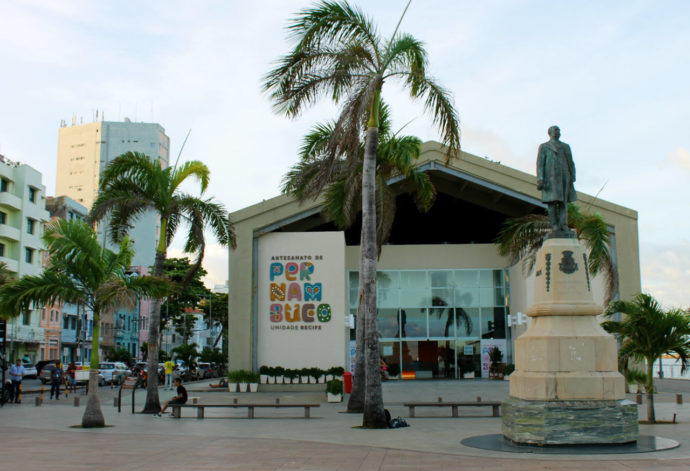
Cais do Sertão Museum
Nearby is the Cais do Sertão Museum, one of the most unique museums I’ve ever visited. It’s inspired by Luiz Gonzaga, a famous local musician, and uses his life to share stories about Pernambuco’s countryside (Sertão).
The museum, housed in old warehouses at the Port of Recife, uses interactive exhibits to explore different facets of daily life in the region: living, working, singing, occupying, believing, migrating, and creating. You can even try karaoke with typical songs and learn to play local instruments.
Address: Cais do Sertão – Armazém 10, Av. Alfredo Lisboa, s/n
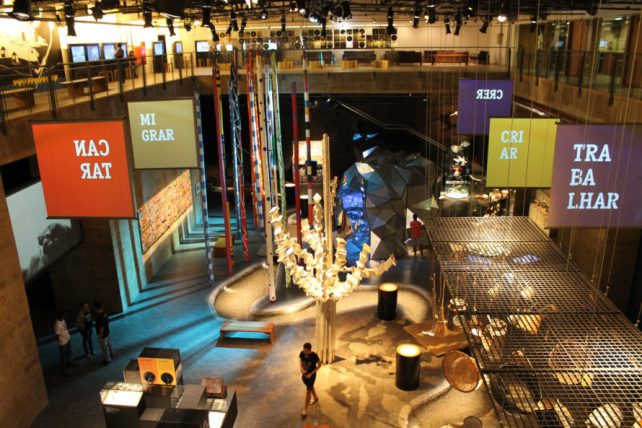
Arsenal Square and Paço do Frevo Museum
From there, head towards Praça do Arsenal (Arsenal Square), where you’ll find Malakoff Tower. This cultural space hosts exhibitions, an observatory, and a viewpoint. Surrounding the square are bars and restaurants with a relaxed atmosphere.
The main highlight here is Paço do Frevo, a museum dedicated to Frevo, an essential rhythm and dance in Pernambuco (especially during Carnival).
The museum’s collection is small, and much of it is in Portuguese only, but it’s a beautiful place. You’ll hear frevo music, see estandartes (banners used by Carnival groups) displayed below your feet, and view photos that capture this cultural celebration.
You can also join free workshops to learn frevo dancing, depending on the schedule.
Address: Rua da Guia, 117, Bairro do Recife
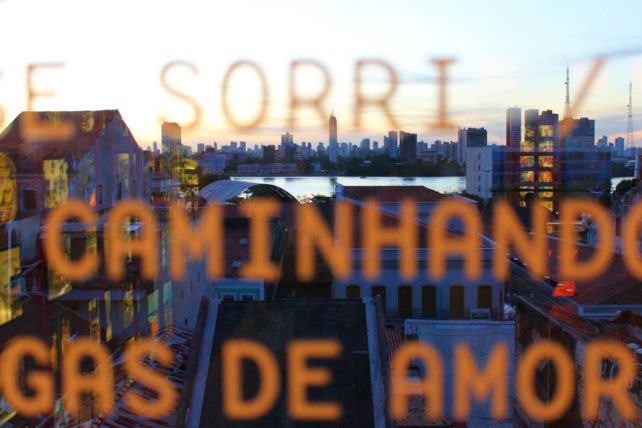
Bom Jesus street
Nearby is the neighborhood’s most scenic street, Rua do Bom Jesus, which was once named one of the world’s most beautiful streets (a bit of an exaggeration, in my opinion, although it is quite pretty).
In addition to the colorful buildings, it’s home to the first synagogue in the Americas, Kahal Zur Israel, which you can visit. You’ll also find the Embaixada dos Bonecos Gigantes, a simple “museum” featuring the giant dolls that are a Carnival staple here.
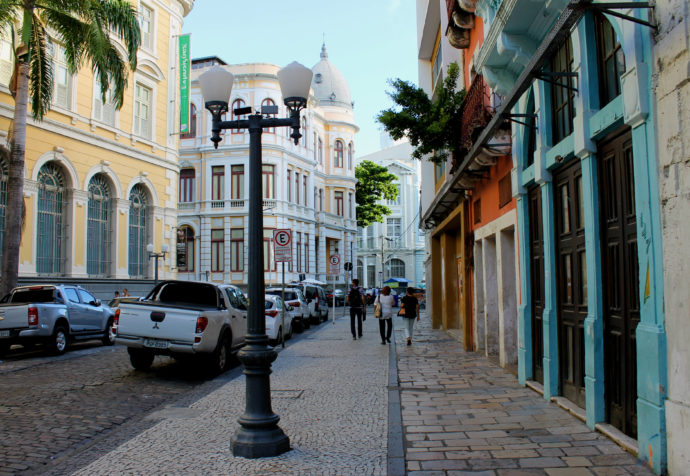
Livraria Jaqueira, Madre de Deus Church and Moeda Street
I used to love visiting Paço Alfândega, a small shopping mall in a charming historic building, where I’d go up to the top floor for the view. Recently, it was turned into an office building, so tourists aren’t allowed entry anymore.
But it’s still worth a stop to check out Livraria Jaqueira, a large bookstore on the ground floor of the parking area. They sell books, stationery, wine, and have a café. There are also a couple of restaurants next to it.
On the way there, you can admire the Madre de Deus Church, one of the most beautiful in Recife, right next to Paço Alfândega. Then, if you’re in a bohemian mood, head to one of the bars on Rua da Moeda, just across the street.
Address: Rua da Alfândega, 35, Bairro do Recife
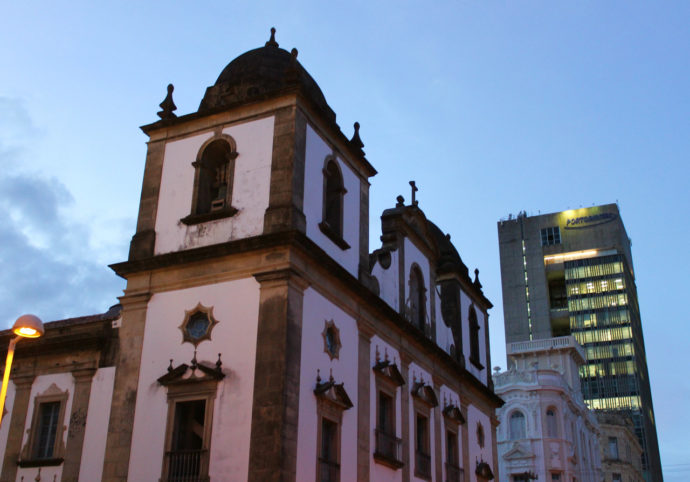
Catamaran Tour
Another favorite on my list of things to do in Recife is a trip with Catamaran Tours, a company that offers several catamaran itineraries along the Capibaribe River. My favorite route goes under the city’s main bridges at sunset—it’s incredible.
They also offer an occasional tour to Ilha de Deus, a spot unknown to most tourists (and many locals). Just a 10-minute drive from central Recife, Ilha de Deus (God’s Island) was once called the “Island Without God” due to a lack of infrastructure and past violence.
But things have changed dramatically over the past decade, with tourism as a key driver of transformation. Now you can visit the community, learn about the local seafood collectors, dine on fresh seafood at Negra Linda Bistro, and even catch a frevo performance.
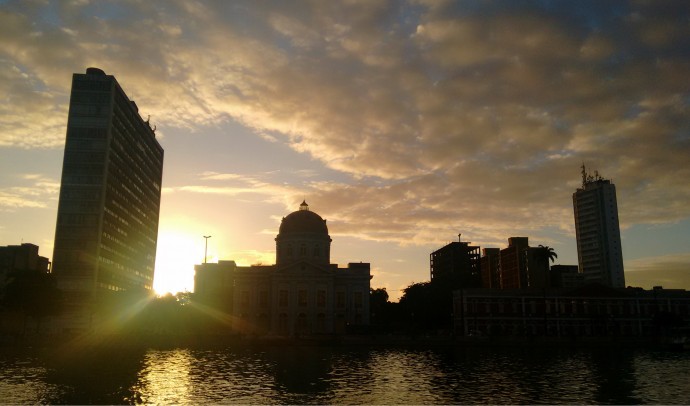
Things to do in Recife’s city center
From Recife Antigo, you can easily walk to the downtown area by crossing Ponte Buarque de Macedo to Praça da República. This route takes you through the Santo Antônio, São José, and Boa Vista neighborhoods (which make up the city center), providing a more local experience beyond typical tourist spots.
República Square
In Praça da República (República Square), admire a beautiful baobab tree and visit historical landmarks like Santa Isabel Theater and the Palácio do Campo das Princesas. You can tour these buildings on specific days at no cost.
Capela Dourada
Nearby, the stunning Capela Dourada (Golden Chapel) showcases intricate golden decor. Its construction began in 1696, making it the first temple in Brazil completely covered in baroque decoration.
Address: Altura da Rua Siqueira Campos, R. do Imperador Pedro II, S/N – Santo Antônio.
Basilica and Convent of Nossa Senhora do Carmo
From there, take a short walk to the Basilica of Recife’s patron saint, featuring Brazil’s tallest baroque tower.
The head of the quilombola leader Zumbi dos Palmares was exposed in his courtyard after he was brutally killed, and today there is a statue there in his honor. Quilombola is how we call the enslaved people who resisted the slavery regime in Brazil and formed settlements (quilombos), and Zumbi is the most famous of them.
Address: Avenida Dantas Barreto s/n
Pátio de São Pedro
Another short walk takes you to Pátio de São Pedro (Saint Peter’s Courtyard), a large, rectangular plaza lined with historic buildings. The highlight is the Co-Cathedral of São Pedro dos Clérigos, commonly known as Igreja de São Pedro (Saint Peter’s Church). The square often hosts artistic performances.
If you’re a fan of seafood, it’s definitely worth stopping by the São Pedro restaurant, opened by chef Thiago Chagas to help revitalize this area, which had been somewhat neglected by local authorities. They source fresh ingredients from the nearby São José Market.
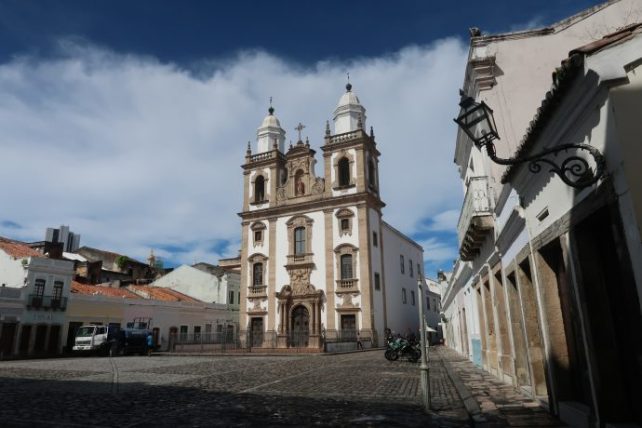
São José Market
Mercado de São José (São José Market) is also one of my top recommendations in Recife. Opened in 1875, it was the first prefabricated iron building in Brazil and was built in the same neoclassical style as 19th-century European markets.
Beyond its architectural charm, this historical gem houses numerous stalls selling crafts made from clay, wood, lace, and straw, as well as herbs, honey, grains, fish, and much more.
Address: Praça Dom Vital, s/n – São José
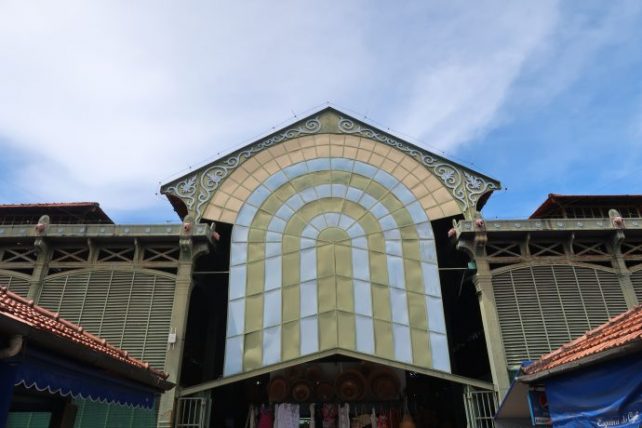
Museu da Cidade do Recife
Another highlight in the São José neighborhood is the Museu da Cidade do Recife (Recife City Museum), located in the historic Forte das Cinco Pontas (Five Points Fort), which is fascinating in itself.
The museum’s collection includes photographs, maps, and archaeological artifacts that illustrate the urban history of Recife from the 17th century to today.
Address: Praça das Cinco Pontas, s/n – São José
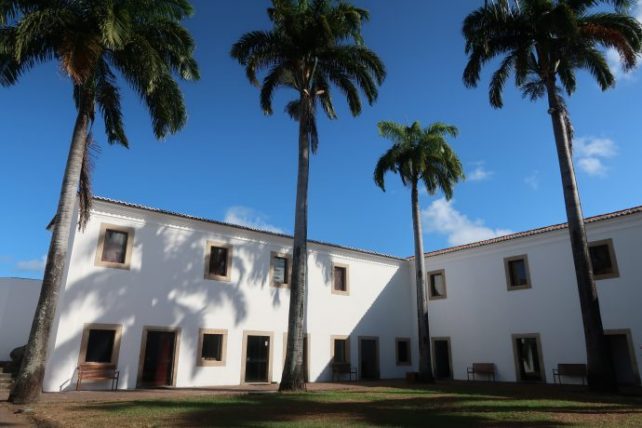
Casa da Cultura
Another historic building repurposed as a cultural space in the area is Casa da Cultura (Culture House), a former prison converted into a craft center in 1975. Shops are set up in the former prison cells, giving the place a unique character.
Though it may look a bit worn, it’s worth a visit if you’re nearby to explore its history, check out local crafts, and perhaps pick up some souvenirs.
Address: Rua Floriano Peixoto, s/n – Santo Antônio
Museu do Trem
Near Casa da Cultura, you’ll find Museu do Trem (Train Museum), a railway museum housed in the 19th-century building of the old Recife Central Station. It’s a simple space but worth a quick visit.
The museum holds hundreds of artifacts related to Pernambuco’s railway history, including locomotives, seats, ticket booths, stampers, flags, whistles, clocks, as well as photos, posters, texts (likely all in Portuguese), and videos.
Address: R. Floriano Peixoto, s/n – São José
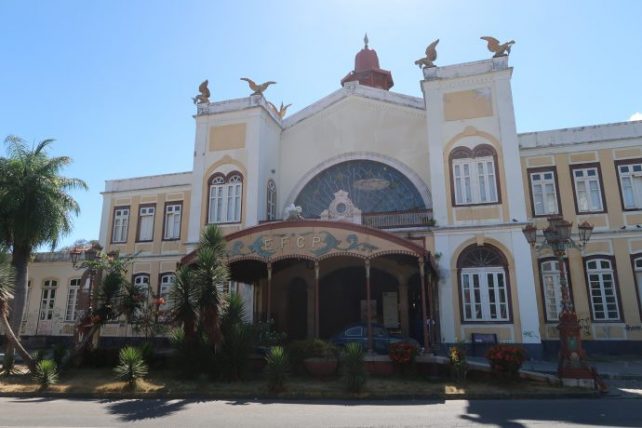
Rua da Aurora and Museu de Arte Moderna
In the Boa Vista neighborhood, adjacent to São José, you’ll find the iconic Rua da Aurora (Aurora Street), famous for its colorful, photogenic houses that are often featured in images of Recife.
Here you’ll also come across the Museu de Arte Moderna Aloísio Magalhães (MAMAM), Recife’s Modern Art Museum. Located in a charming 19th-century mansion, it hosts exhibitions of modern and contemporary art.
Address: Rua da Aurora, 265, Boa Vista
Cinema São Luiz
Just a short distance from MAMAM is the historic São Luiz Cinema. Opened in 1952, it was designated a historical monument by the State government in 2008. As one of the few remaining street cinemas in the country, São Luiz is also home to the annual Recife Janela International Film Festival. The interior is stunning—try to catch a movie here to appreciate the beautiful stained glass windows.
Address: Rua Aurora, 175
Boa Vista Market
The Greater Recife Area has over 20 markets spread throughout its neighborhoods, each reflecting a slice of the region’s history and culture. Besides the São José market, I especially recommend the Boa Vista one.
Although small, it’s a favorite for locals and offers mainly food stalls. The booths double as bars and restaurants, making it a great spot for a regional lunch. On weekends, plan to arrive early (around 11 a.m.) to secure a table. If you’re sensitive to heat, you may want to avoid it during the summer months.
Address: R. da Santa Cruz, 144 – Boa Vista
Bike tours in Recife
For a more “alternative” way to explore Recife’s main attractions, I highly recommend the guided bike tours offered by La Ursa.
They have a popular route that begins at Boa Viagem beach and goes to Recife’s city center, covering some of the spots I’ve mentioned. The tour uses rental bikes from TemBici, which can be rented for the day through a dedicated app. At one point, you cross from Parque das Esculturas to Marco Zero by taking the bikes on a small boat—a really fun experience.
Another option is their route from Recife Antigo to the neighboring city of Olinda, which is quite fun as well. They also offer a moonrise tour near Marco Zero—no bikes on this one, but it’s a super cool experience!
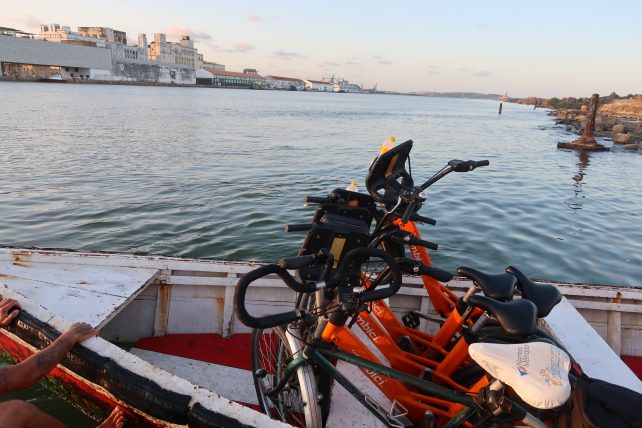
Famous tourist attractions in Recife
So far, I haven’t mentioned three of Recife’s most famous attractions. Ready to explore some iconic spots?
Boa Viagem beach
Maybe you’re wondering where the beach fits into this itinerary, right? When people think of Recife, Boa Viagem Beach is often the first place that comes to mind. While I love showing that the city has so much more to offer, I have to say that Praia de Boa Viagem, the main urban beach and one of Recife’s postcards, is definitely worth a visit.
The Recife coastline may not be Brazil’s most breathtaking, but it has its charm. Plus, you’re likely to stay in this area, as most of the city’s hotels and hostels are here.
One of my favorite things about going to the beach in Recife is sampling the beach vendors’ offerings—everything from broths, quail eggs, and grilled cheese to shrimp. And don’t miss out on a caipirinha or caipirosca (Brazilian drinks) made with local fruits like acerola and umbu-cajá, served at beach stalls like Barraca do Pingo (you’ll find it on Google Maps).
You’ve probably heard about Recife’s shark warnings, as there have been some attacks since the construction of Suape Port nearby. It’s recommended not to go too deep into the water. However, when it’s shallow, at low tide and under clear skies, I risk a quick dip.
A safer (and equally delightful) way to enjoy the coast is by jogging or cycling along the 8-km promenade, which has tracks for running and cycling and several rental bike stations (the TemBici ones I’ve mentioned before).
Boa Viagem also hosts the Feirinha de Boa Viagem, a small market with craft stalls and occasional cultural performances, and Dona Lindu Park, which hosts concerts and events.
If you’ve seen the famous film Aquarius by Pernambuco director Kleber Mendonça Filho, don’t miss seeing the charming building where the protagonist lives. The real-life Aquarius building is named Edifício Oceania, located at Avenida Boa Viagem, 560.

Ricardo Brennand Institute
Another staple on most lists of best things to do in Recife is the Instituto Ricardo Brennand (Brennand Institute), which was even chosen as the best museum in Latin America by TripAdvisor. I’m not a big fan of it, but many tourists seem to like it.
Here, you’ll find a grand “medieval-style” castle, a gallery with numerous works by Frans Post (the first European artist to depict American landscapes during the Dutch occupation of Brazil), as well as pieces by other artists, tapestries, sculptures, and furniture. There’s also a large collection of bladed weapons, from swords and daggers to armor.
Address: Alameda Antônio Brennand, s/n – São João – Várzea
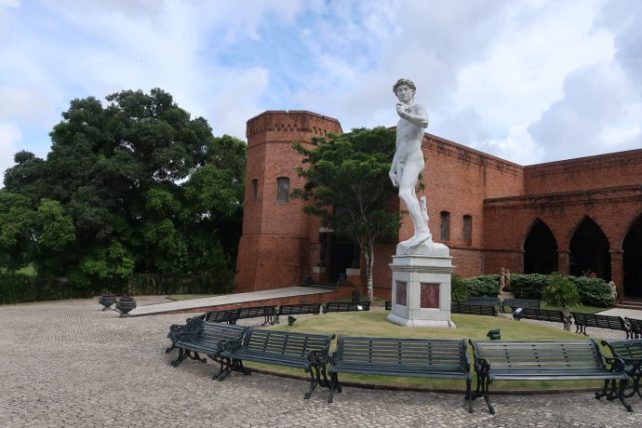
Francisco Brennand Workshop
Close to the Brennand Institute is the Oficina Francisco Brennand (Francisco Brennand Workshop), the studio of Ricardo’s cousin, Francisco. He’s the same artist behind the ceramic sculptures seen from Marco Zero and many other works around Recife. Having a Brennand ceramic piece used to be a status symbol among local elite.
The museum and studio complex is located in an old brick and tile factory on the land of Engenho Santos Cosme e Damião, inherited by the artist. It’s filled with hundreds of sculptures, murals, panels, paintings, drawings, and ceramic pieces inspired by Greek and Roman mythology, history, nature, and many phallic themes.
Address: Santos Cosme e Damião Property, s/n, Várzea
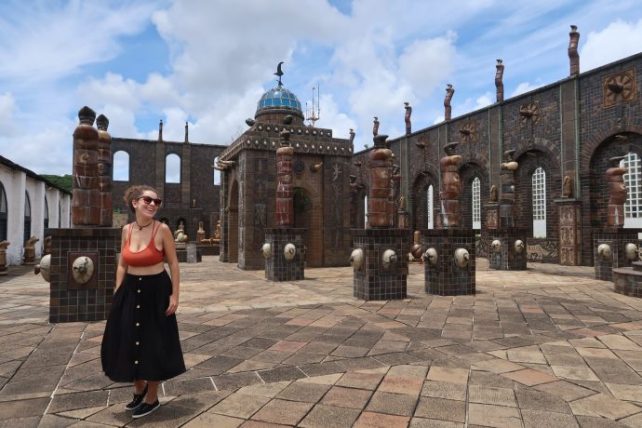
North Zone of Recife
One of Recife’s most beautiful areas, the Zona Norte (North Zone), is often overlooked by tourists. But I hope you won’t make the same mistake! The North Zone is home to charming neighborhoods like Casa Forte, Jaqueira, Graças, and Espinheiro. These neighborhoods, with their tree-lined streets and excellent restaurants, bars, and cafes, are great spots for a more relaxed, local experience in Recife.
I actually grew up in Casa Forte. If you have time to explore the area, I suggest starting at Praça de Casa Forte (Casa Forte Square), also known as Praça da Vitória Régia (Water Lily Square). This was the first public garden designed by renowned Brazilian landscaper Burle Marx. You’ll see beautiful water lilies in the square’s small ponds, and I recommend stopping by one of the nearby cafes or restaurants—try the ice cream at Bellucci!
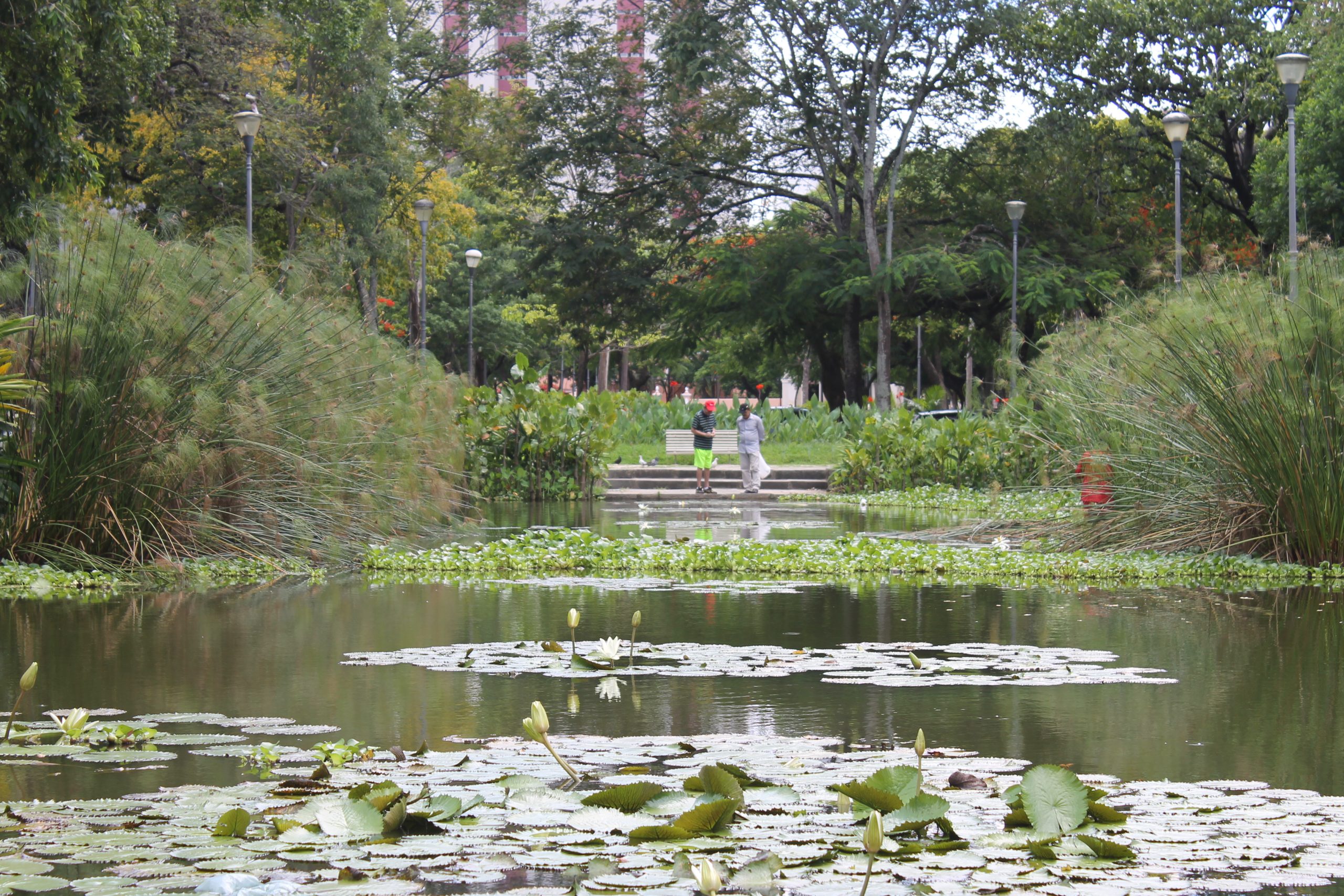
Afterward, cross Avenida 17 de Agosto (the main avenue of the neighborhood) and walk into the historic Estrada Real do Poço (Real do Poço Street), which leads to the quaint neighborhood of Poço da Panela. This area feels like a small town, with old houses and peaceful streets.
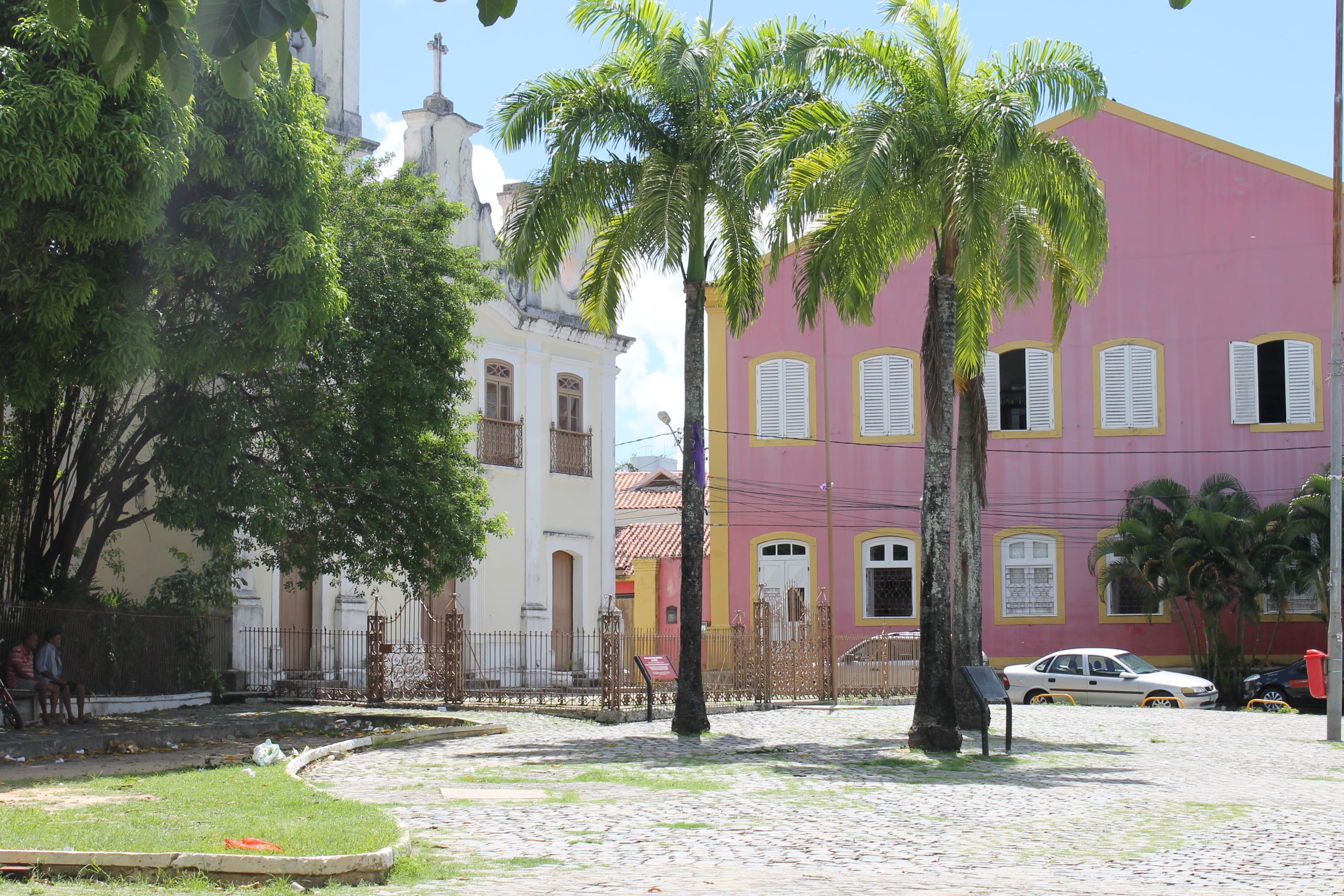
Poço da Panela has a long history as a health retreat where aristocrats once sought the healing properties of Capibaribe River baths. Nowadays, it’s primarily an upper-middle-class neighborhood, with many residents inheriting homes passed down through generations.
I recommend a stroll around the neighborhood. Be sure to check out the small Nossa Senhora da Saúde Church and a quirky, mini-version of Abbey Road located on Rua Monsenhor Lôbo, complete with a painted crosswalk, created by a local resident. You’ll also find some cozy bistros here.
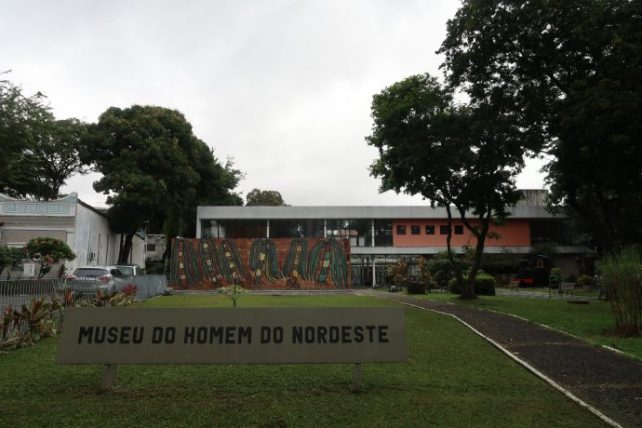
Another must-see in this area is the Museu do Homem do Nordeste (Museum of the Northeastern People) on Avenida 17 de Agosto, 218. This museum beautifully showcases the diverse mix of Black, Indigenous, and European influences that shape Brazilian culture. The collection is worth exploring.
Located a bit further away on Rua Jorge Tasso Neto in Apipucos, the Casa-Museu Gilberto Freyre (Gilberto Freyre House-Museum) was once home to the famous Pernambuco sociologist. Set in a 19th-century mansion surrounded by an ecological reserve, the museum features Freyre’s personal belongings, antique furniture, porcelain, silverware, and folk art, offering a glimpse into his life and legacy.
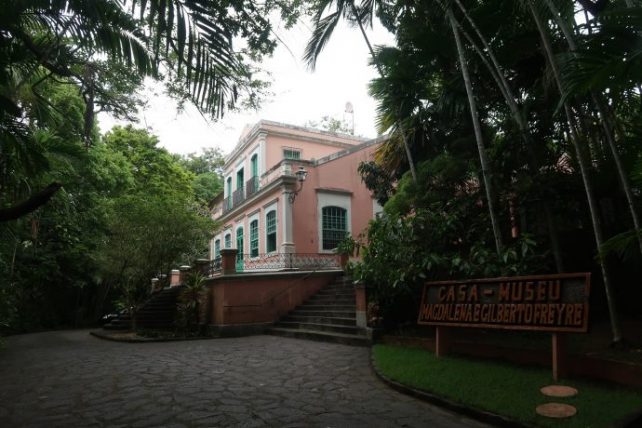
Best things to do in Recife: suggested itinerary day by day
Day 1: Tour of Recife Antigo (Old Recife)
If you plan to visit all the museums and cultural sites, enjoy a meal at a local restaurant, and take a catamaran tour, dedicate an entire day to Recife Antigo and even extend your visit into the evening. If you just want to walk around and visit one or two museums, a single afternoon may suffice, perhaps combined with a morning at the beach or a visit to Olinda’s Historic Center.
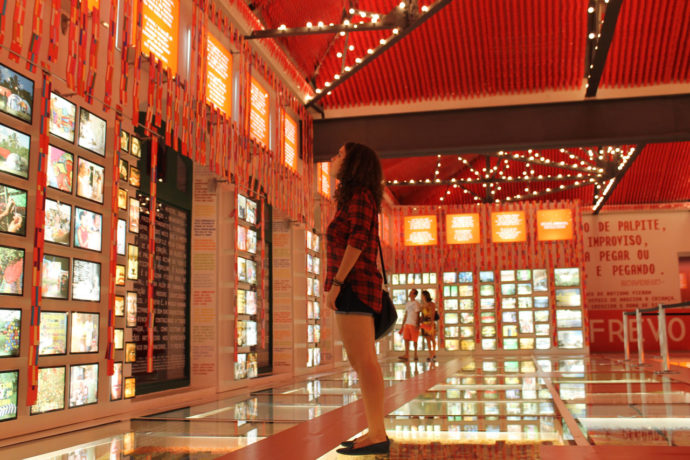
Day 2: Beach + Bike ride or Bike ride + City center
Spend your morning at Boa Viagem beach, then join the La Ursa Tours bike ride that starts in Boa Viagem and heads to the city center. Alternatively, you could begin your day with the bike ride and explore the city center after your tour.
Day 3: Casa Forte and Brennand Museums
For a more off-the-beaten-path experience, consider taking an Uber or bus to Praça de Casa Forte. Stroll around Poço da Panela, visit the Museu do Homem do Nordeste, and check out the Casa-Museu Gilberto Freyre. Then, take an Uber to either the Instituto Brennand or Oficina Brennand.
Day 4: Olinda
When in Recife, don’t miss the chance to visit the Historic Site of the neighboring city, Olinda. It’s conveniently close, especially if you’re staying near the city center of Recife.
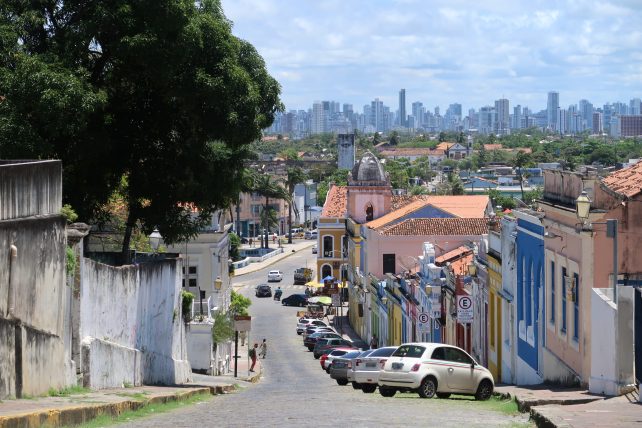
Day 5: Other attractions
If you haven’t already, spend a day at the beach, enjoying food and drinks. You could also explore other neighborhoods like Graças, visit additional public markets such as Mercado da Encruzilhada (there’s a cool bar there called Ôro), or dine at fantastic restaurants like Reteteu or Arvo. If you’re up for it, consider a day trip to nearby beaches like Porto de Galinhas, Calhetas, or Itamaracá.
I hope you found this article helpful. Do you have any questions about what to do in Recife? Feel free to ask in the comments section! And if you need assistance planning your trip to Brazil, don’t hesitate to reach out to me at [email protected] for information about my travel planning services and Portuguese lessons.




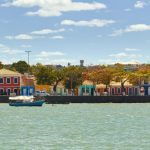









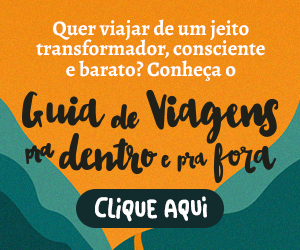

0 Comentários